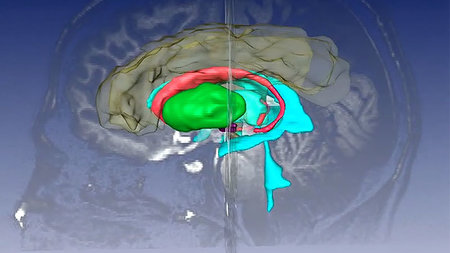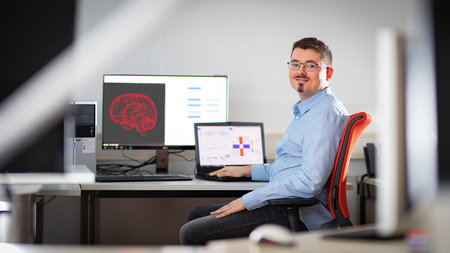Geometric Deep Learning
Deep Neural Networks for Geometric Deformation Modeling
The term "Deformation" refers to the changes in the geometry of a structural body. Using Finite Element Analysis (FEA) has been a typical approach for many years that helps engineers to investigate the simulation results and analyze the final product shape before production. However, the simulation process in the 3D domain is time-consuming for large meshes with fine details and requires high computational power to solve the numerical equations. In addition, manual tuning and re-execution of simulations are required to find the proper process parameters.
The concept of geometric deep learning (GDL) has the potential to bring the power of deep neural networks to the analysis of 3D data. Explicit 3D representations such as meshes are not easily combined with neural networks as there is no distinct mesh representing a single geometry. Another explicit form, point clouds, as an unordered set of points sampled on the surface, can have a varying and often huge number of dimensions that limits their use as an input to a neural network. On the contrary, implicit representations such as signed distance functions (SDF) define a 3D shape as a continuous function that could be approximated by a deep neural network. The continuous property of implicit representations causes the algorithm to be independent of the size and topology of the shapes.
Dataset
Due to the lack of public datasets for 3D deformed shapes, we created our own dataset. A simple cuboid is defined in FreeCAD and then deformed using FEM simulations. The cuboid is fixed from both sides, and a force is applied to either the top or bottom surface. By changing the force position and magnitude, the dataset consists of 6228 deformed samples. A mesh sample in the FreeCAD environment is shown below:

Download the dataset: (.zip)
Each file is described by its filename: fc1_Face<ind>_<dir><magnitude> , where
- ind : index of the face that force is applied on.
- magnitude : magnitude of force in kN.
- dir : _Plus or _Minus shows the force direction (upward or downward).
Example : fc1_Face127_Plus8700 : 8700 kN force is applied on face index 127 in +Z direction.
ML@Karoprod: Implicit representation for non-watertight meshes
The BMBF project ML@Karoprod (with the Fraunhofer IWU Dresden and Scale GmbH) investigated how to train deep neural networks on realistic FEM simulations, for deep drawing and joining operations. By changing a set of process parameters such as "sheet thickness", "drawing depth", "hold-down force", "draw gap", and "insertion position", our partners were able to create a dataset containing 879 deep drawing FEM simulations. The resulting meshes with over 20,000 nodes can be compared to a reference mesh to measure deviation.

Byusing implicit approaches, we do not have to rely on just a few hundred simulated experiments in order to feed the neural network (which will most likely lead to overfitting), but thousands of measurements per experiment, representing thickness, thinning, plastic strain, etc., at individual locations. As opposed than using the non-Euclidean structure of the input space and performing expensive operations such as convolutions on the entire input mesh, this approach ensures efficient regularization of the NN by using individual positions as training patterns and proved to be very robust for modeling FEM simulations of different sizes and topologies.

The proposed model is capable of processing large meshes and predicting the deviation and thickness of the resulting mesh based on the input parameters. The results indicate that this method can be effectively combined with existing FEM methods. As a result, engineers will be able to refine FEM simulations faster and tune the most appropriate process parameters more easily. Furthermore, the model can be generalized to unseen data to a certain extent; for example, it could be used to generate simulation results for an unseen initial sheet thickness value.
The code is available at https://github.com/hamkerlab/ML-Karoprod-MeshPredictor.
Associated projects
BMBF project ML@Karoprod "Maschinelles Lernen zur Prognose von Prozessparametern und Bauteilqualitaet in der automobilen Karosserieproduktion" 01IS18055C (2018-2022)
Selected Publications
Farahani, A., Vitay, J., Hamker, F.H. (2022)
Deep Neural Networks for Geometric Shape Deformation
Bergmann, R., Malburg, L., Rodermund, S.C., Timm, I.J. (eds) KI 2022: Advances in Artificial Intelligence. Lecture Notes in Computer Science, vol 13404. Springer, Cham. doi:10.1007/978-3-031-15791-2_9.





